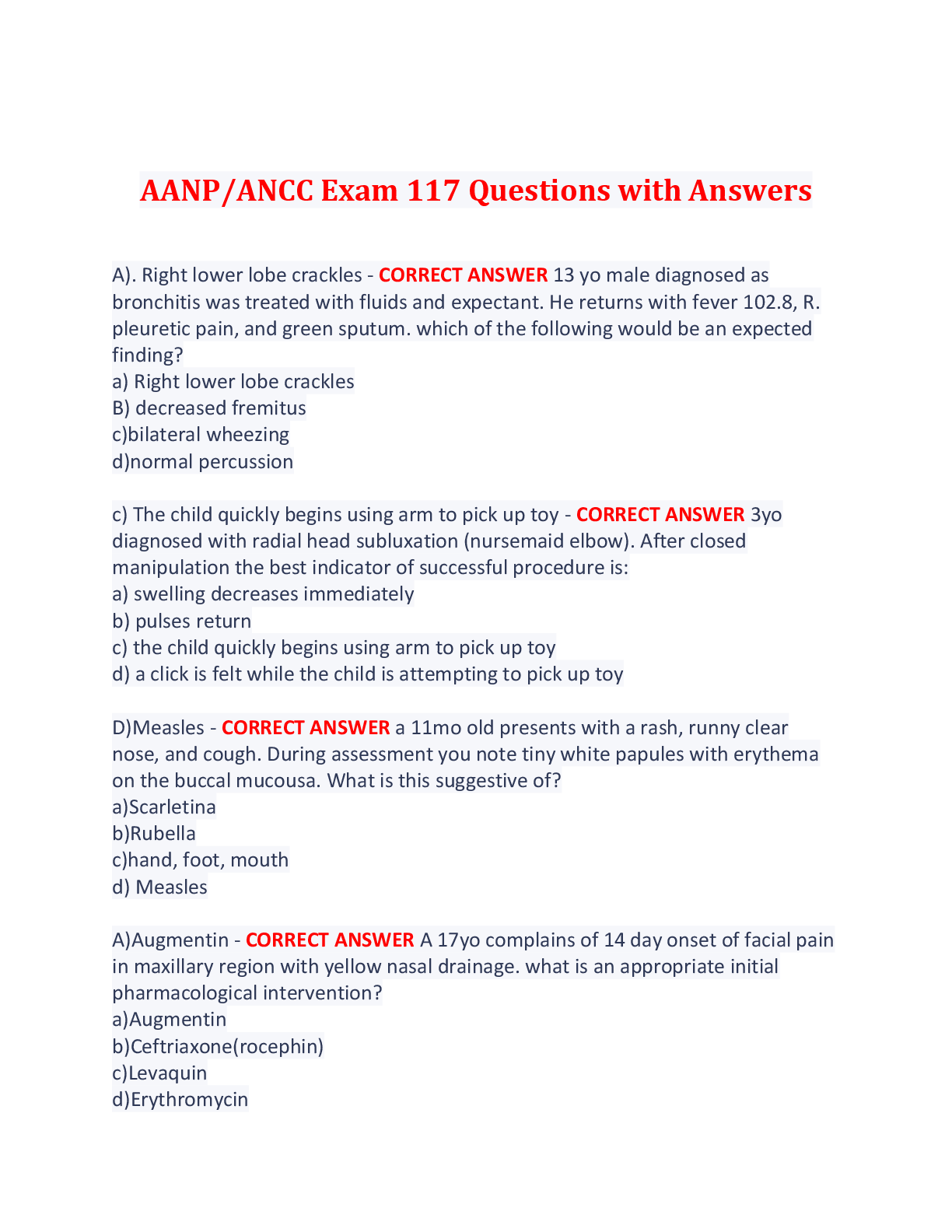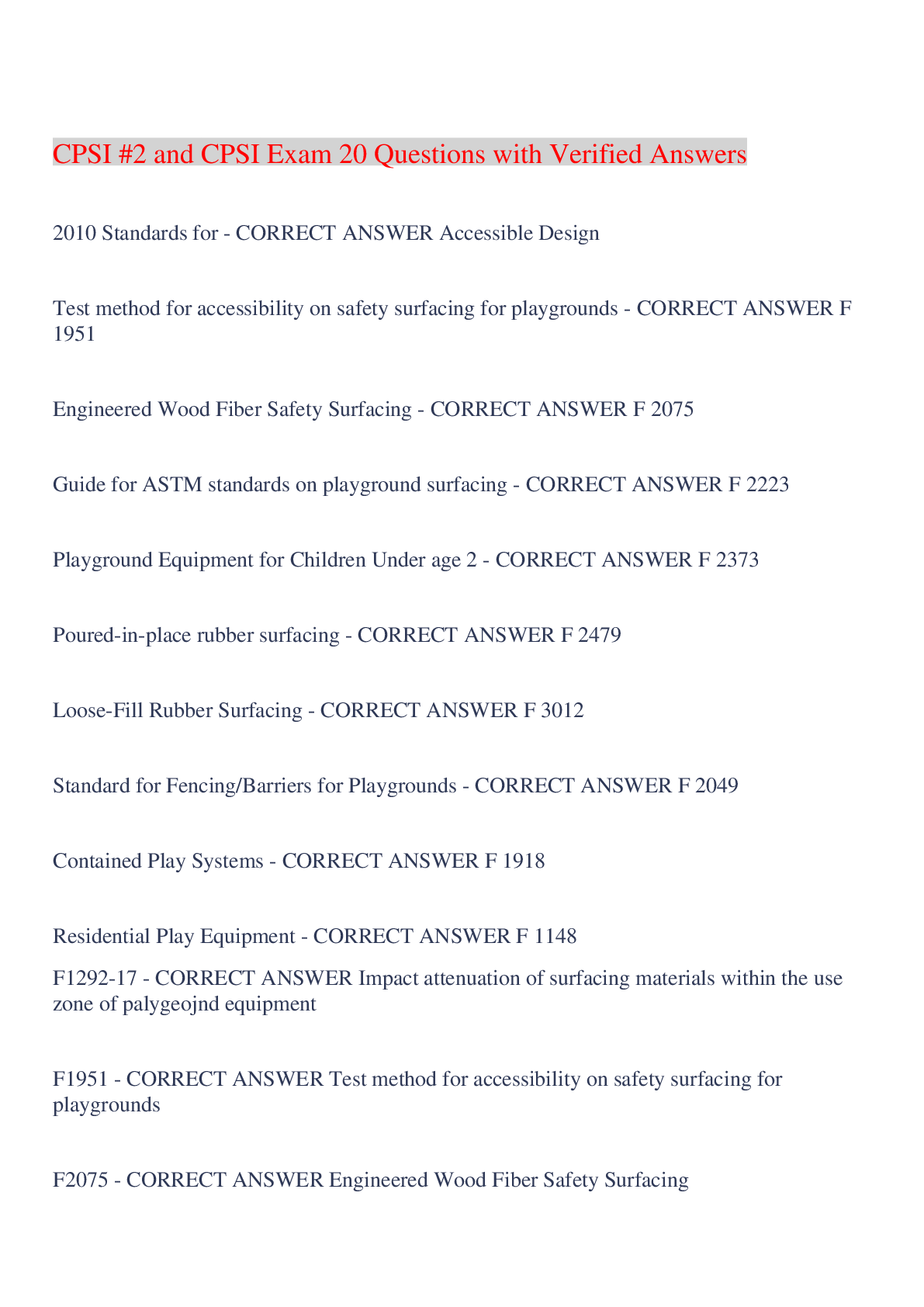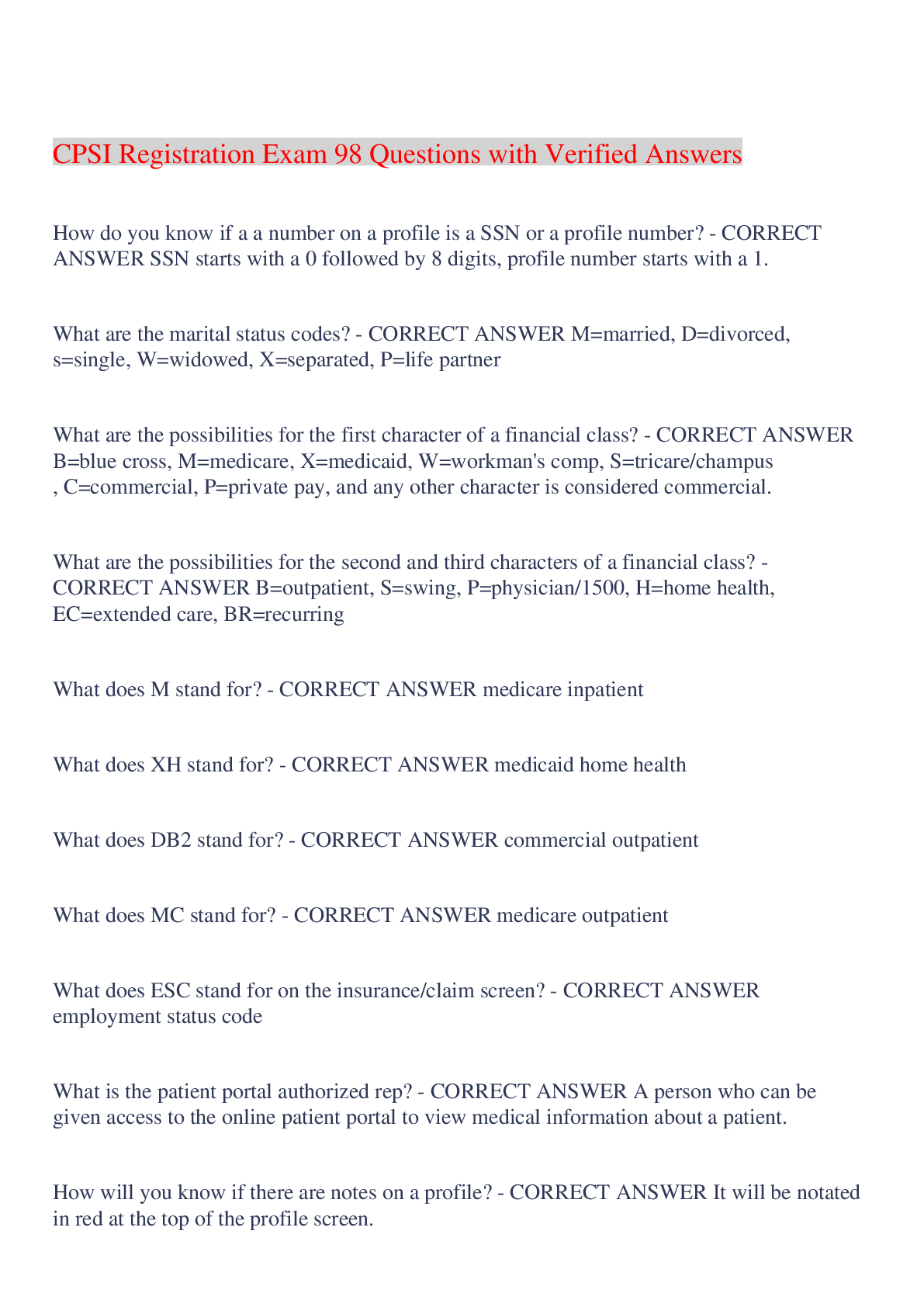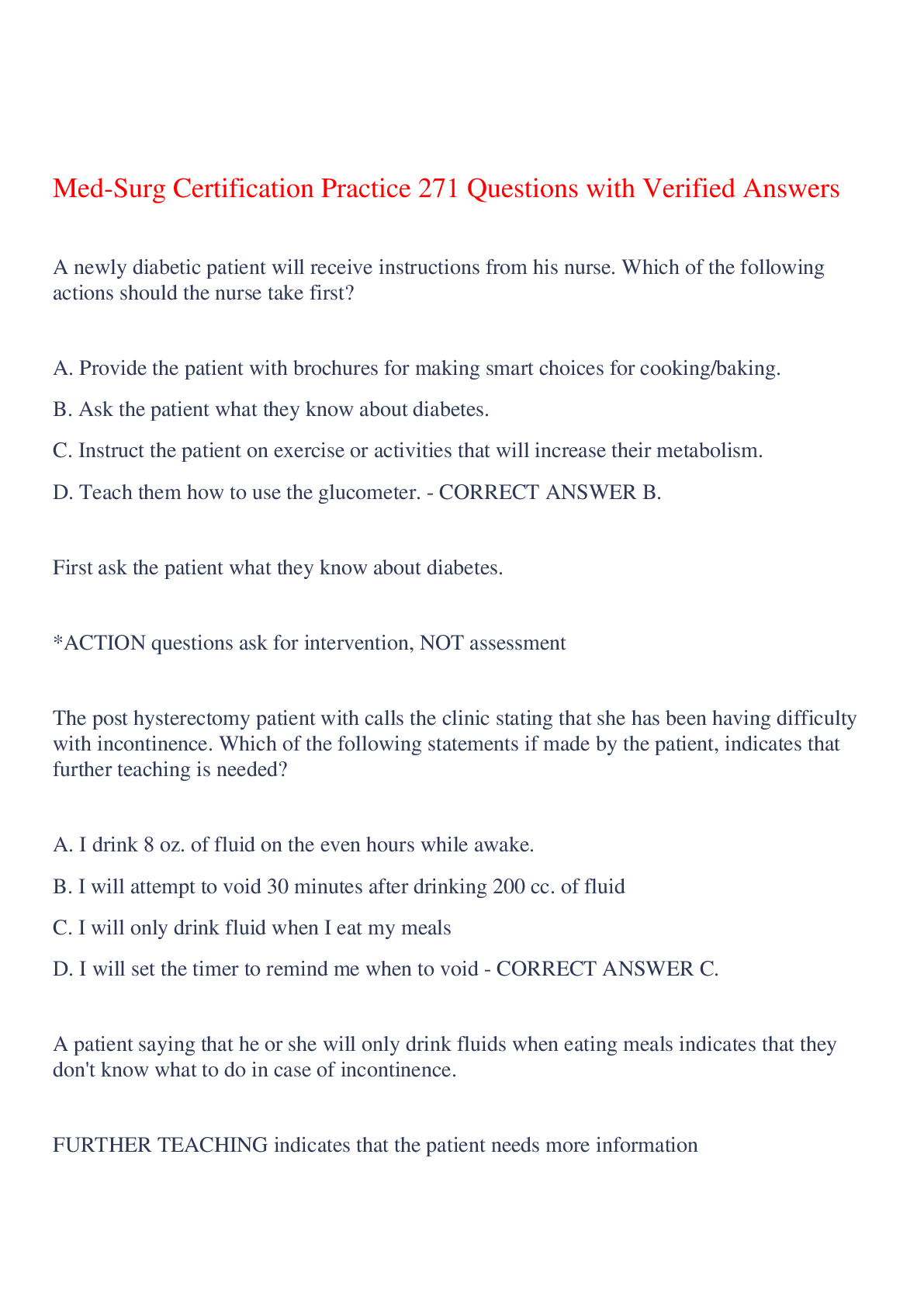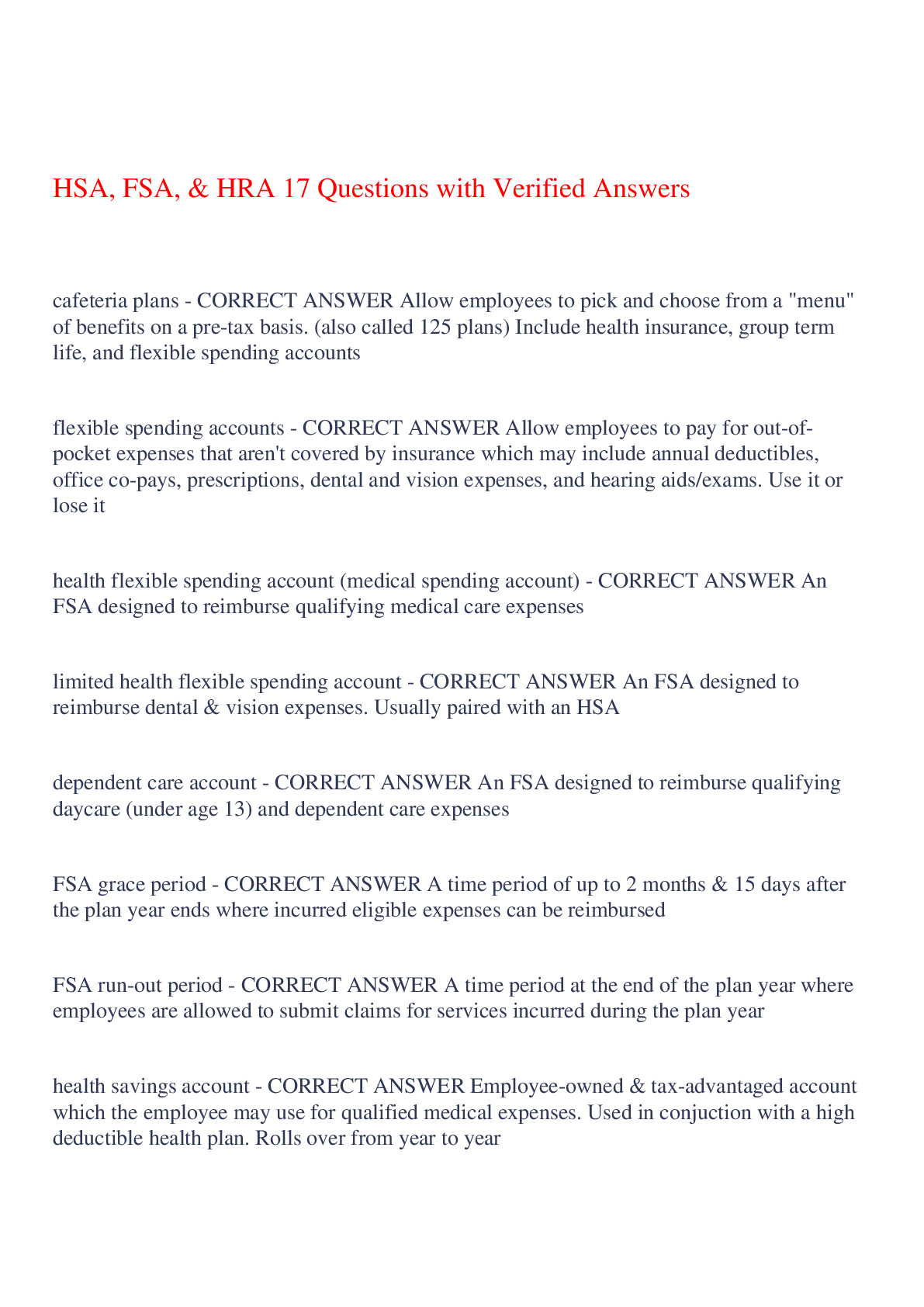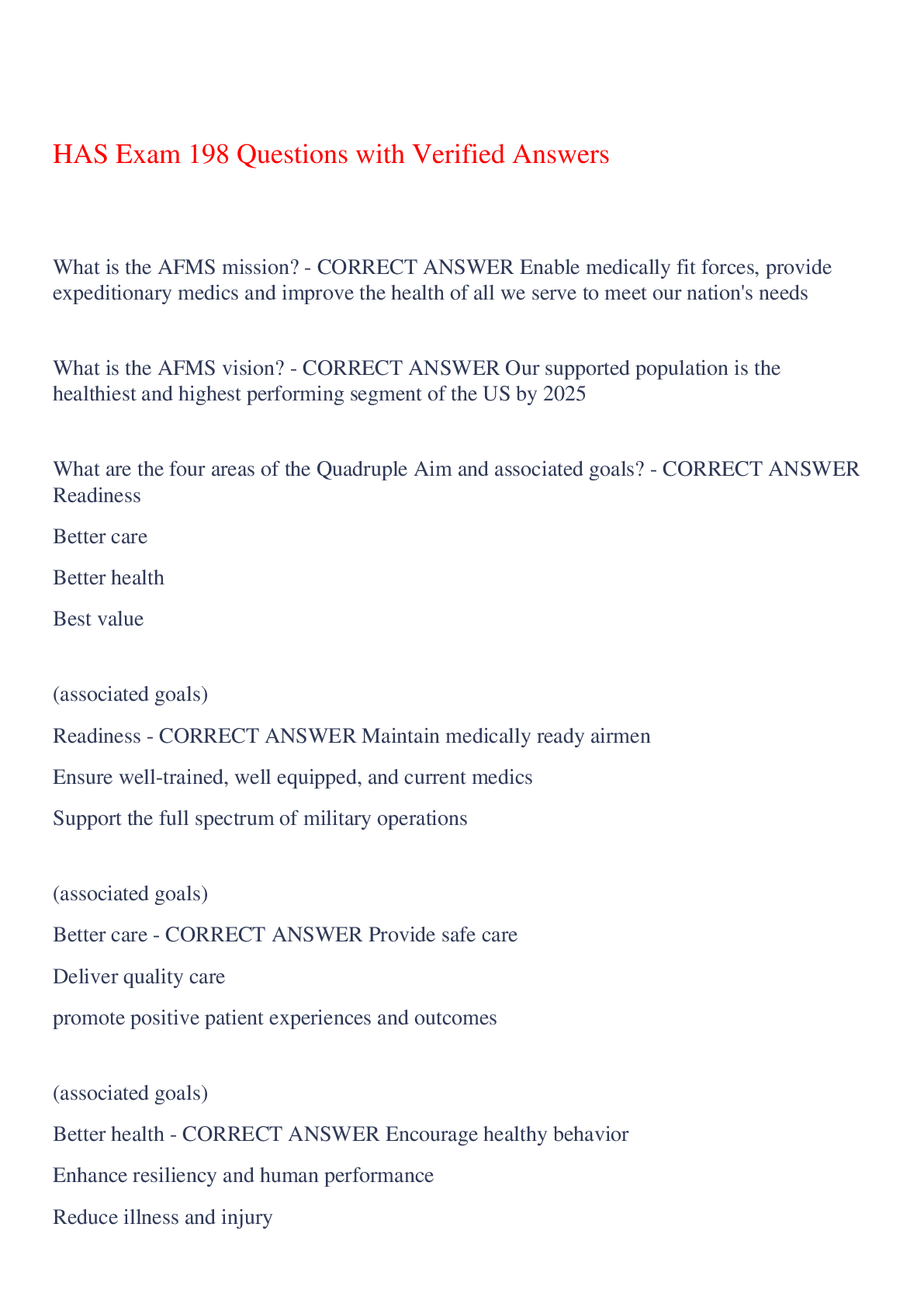SC-101 Review Test Submission: Pretest 3_LATEST,100% CORRECT
Document Content and Description Below
SC-101Review Test Submission: Pretest 3_LATEST Question 1 8.3 out of 8.3 points All USG department-level, regional-level, and country-level plans an... d strategies have a common root in the . Selected Answer: d. National Security Strategy (NSS) Answers: a. National Defense Strategy (NDS) b. National Military Strategy (NMS) c. Joint Strategic Plan (JSP) d. National Security Strategy (NSS) Response Feedback: Correct. All USG department-level, regional-level, and country-level plans and strategies have a common root in the National Security Strategy (NSS). Question 2 8.3 out of 8.3 points Formal SC assessments should be conducted to establish . Selected Answer: c. a baseline of partner nation’s capabilities Answers: a. redundant capabilities with ignoring resource constraints b. a baseline of USG capabilities c. a baseline of partner nation’s capabilities d. goals and objectives of SC activities Response Feedback: Correct. Formal SC assessments should be conducted to establish a baseline of partner nation’s capabilities. Question 3 8.7 out of 8.7 points Select the correct order of precedence of DoD SC planning documents. Selected Answer: b. National Security Strategy (NSS), National Defense Strategy (NDS), National Military Strategy (NMS), Joint Strategic Campaign Plan (JSCP), Combatant Command Campaign Plan (CCP) Answers: a. National Security Strategy (NSS), Joint Strategic Plan (JSP), Joint Regional Strategy, Integrated Country Strategy (ICS) Response Feedback: b. National Security Strategy (NSS), National Defense Strategy (NDS), National Military Strategy (NMS), Joint Strategic Campaign Plan (JSCP), Combatant Command Campaign Plan (CCP) c. National Security Strategy (NSS), Joint Strategic Plan (JSP), Joint Strategic Campaign Plan (JSCP), Integrated Country Strategy (ICS), Combatant Command Campaign Plan (CCP) d. National Security Strategy (NSS), Joint Strategic Plan (JSP), National Defense Strategy (NDS), National Military Strategy (NMS) Correct. National Security Strategy (NSS), National Defense Strategy (NDS), National Military Strategy (NMS), Joint Strategic Campaign Plan (JSCP), Combatant Command Campaign Plan (CCP) is the order of precedence of Department of Defense SC planning documents. Question 4 8.3 out of 8.3 points The DOTMLPF-P, often used in assessing partner nation capabilities, considers areas like . Selected Answer: a. Doctrine, Training, and Personnel Answers: a. Doctrine, Training, and Personnel b. Opportunities, Ministries, and Law Enforcement c. Threats, Politics, and Finances d. Discipline, Technology, and Planning Response Feedback: Correct. The DOTMLPF-P, often used in assessing partner nation capabilities, considers areas like Doctrine, Training, and Personnel. Question 5 8.3 out of 8.3 points The Initiative Design Document (IDD) and associated synchronization matrix should document required to achieve the stated SC outcome. Selected Answer: c. various SC activities Answers: a. the SCO’s responsibilities b. the Combatant Command’s responsibilities c. various SC activities d. a single SC activity Response Feedback: Correct. The Initiative Design Document (IDD) and associated synchronization matrix should document various SC activities required to achieve the stated SC outcome. Question 6 8.3 out of 8.3 points The purpose of the SC Prioritization Framework is to . Selected Answer: b. assess the likelihood of success of SC activities Answers: a. consider only the USG desired goals and outcomes of SC activities b. assess the likelihood of success of SC activities c. exclude the partner’s willingness to participate in considering SC activities d. develop a budget proposal for SC activities Response Feedback: Correct. The purpose of the SC Prioritization Framework is to assess the likelihood of success of SC activities. Question 7 8.3 out of 8.3 points Title 10 U.S. Code authorizes the 333 program to build partner capacity where the determines requirements to be executed, where Title 22 U.S. Code authorizes the FMS program in which the determines (and then requests) requirements to be executed. Selected Answer: d. USG; Partner Nation Answers: a. Partner Nation; USG b. Department of Defense (DoD); Department of State (DoS) c. Department of State (DoS); Department of Defense (DoD) d. USG; Partner Nation Response Feedback: Correct. Title 10 U.S. Code authorizes the 333 program to build partner capacity where the USG determines requirements to be executed, where Title 22 U.S. Code authorizes the FMS program in which the Partner Nation determines (and then requests) requirements to be executed. Question 8 8.3 out of 8.3 points Tools and methodologies to conduct assessments of operational and security environments can take the form of . Selected Answer: d. All of the above Answers: a. SWOT b. DIMEFIL c. PMESII-CTP Response Feedback: d. All of the above Correct. All of the above are tools to conduct assessments of operational and security environments assessments. Question 9 8.3 out of 8.3 points Tracking terrorist movements and activities would be a common interest of which entity below participating in the interagency process? Selected Answer: d. All of the above Answers: a. Department of Defense (DoD) b. Federal Bureau of Investigation (FBI) c. Department of Homeland Security (DHS) d. All of the above Response Feedback: Correct. All of the above would have interest in tracking terrorist movements and activities. Question 10 0 out of 8.3 points USG country-level plans and strategies, like the Department of State and the Department of Defense , should be integrated to develop a cohesive approach. Selected Answer: c. National Security Strategy (NSS); National Military Strategy (NMS); service-level Answers: a. Joint Regional Strategy; Joint Strategic Campaign Plan (JSCP); regional-level Response Feedback: b. Integrated Country Strategy (ICS); Country-specific Security Cooperation Section (CSCS); Whole of Government c. National Security Strategy (NSS); National Military Strategy (NMS); service-level d. Joint Strategic Plan (JSP); National Defense Strategy (NDS); department-level Incorrect. See Module Three, Lesson One, Page 18-20 Question 11 8.3 out of 8.3 points provides the DoD authority to execute SC activities through unique programs, while enables the DoS to achieve foreign policy objectives through the transfer of defense articles, services, and training. Selected Answer: b. Title 10 U.S. Code; Title 22 U.S. Code Answers: a. Congress; the President b. Title 10 U.S. Code; Title 22 U.S. Code c. Title 22 U.S. Code; Title 10 U.S. Code d. The President; Congress Response Feedback: Correct. Title 10 U.S. Code provides the DoD authority to execute SC activities through unique programs, while Title 22 U.S. Code enables the DoS to achieve foreign policy objectives through the transfer of defense articles, services, and training. Question 12 8.3 out of 8.3 points [Show More]
Last updated: 2 years ago
Preview 1 out of 8 pages

Buy this document to get the full access instantly
Instant Download Access after purchase
Buy NowInstant download
We Accept:

Reviews( 0 )
$12.00
Can't find what you want? Try our AI powered Search
Document information
Connected school, study & course
About the document
Uploaded On
Apr 17, 2022
Number of pages
8
Written in
Additional information
This document has been written for:
Uploaded
Apr 17, 2022
Downloads
0
Views
320


